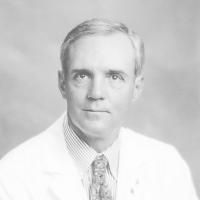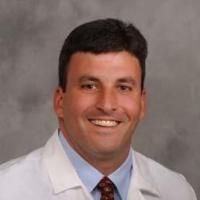Identifying molecular phenotype of nucleus pulposus cells in human intervertebral disc with aging and degeneration.
Date
2016-08
Journal Title
Journal ISSN
Volume Title
Repository Usage Stats
views
downloads
Citation Stats
Attention Stats
Abstract
Previous study claimed that disc degeneration may be preceded by structure and matrix changes in the intervertebral disc (IVD) which coincide with the loss of distinct notochordally derived nucleus pulposus (NP) cells. However, the fate of notochordal cells and their molecular phenotype change during aging and degeneration in human are still unknown. In this study, a set of novel molecular phenotype markers of notochordal NP cells during aging and degeneration in human IVD tissue were revealed with immunostaining and flow cytometry. Furthermore, the potential of phenotype juvenilization and matrix regeneration of IVD cells in a laminin-rich pseudo-3D culture system were evaluated at day 28 by immunostaining, Safranin O, and type II collagen staining. Immunostaining and flow cytometry demonstrated that transcriptional factor Brachyury T, neuronal-related proteins (brain abundant membrane attached signal protein 1, Basp1; Neurochondrin, Ncdn; Neuropilin, Nrp-1), CD24, and CD221 were expressed only in juvenile human NP tissue, which suggested that these proteins may be served as the notochordal NP cell markers. However, the increased expression of CD54 and CD166 with aging indicated that they might be referenced as the potential biomarker for disc degeneration. In addition, 3D culture maintained most of markers in juvenile NP, and rescued the expression of Basp1, Ncdn, and Nrp 1 that disappeared in adult NP native tissue. These findings provided new insight into molecular profile that may be used to characterize the existence of a unique notochordal NP cells during aging and degeneration in human IVD cells, which will facilitate cell-based therapy for IVD regeneration. © 2016 Orthopaedic Research Society. Published by Wiley Periodicals, Inc. J Orthop Res 34:1316-1326, 2016.
Type
Department
Description
Provenance
Subjects
Citation
Permalink
Published Version (Please cite this version)
Publication Info
Tang, Xinyan, Liufang Jing, William J Richardson, Robert E Isaacs, Robert D Fitch, Christopher R Brown, Melissa M Erickson, Lori A Setton, et al. (2016). Identifying molecular phenotype of nucleus pulposus cells in human intervertebral disc with aging and degeneration. Journal of orthopaedic research : official publication of the Orthopaedic Research Society, 34(8). pp. 1316–1326. 10.1002/jor.23244 Retrieved from https://hdl.handle.net/10161/31381.
This is constructed from limited available data and may be imprecise. To cite this article, please review & use the official citation provided by the journal.
Collections
Scholars@Duke

William James Richardson
- Current research includes investigation of biomechanical aspects of cervical injury with head impact. This involves cadaveric work with high-speed photography and load cells to ascertain the mechanism for spinal fractures.
2. An animal model is being used to evaluate the biomechanics of cervical laminectomy versus laminoplasty compared to the normal spine. A portion of the animals are developing myelopathy secondary to instability after the surgical procedure and this is being evaluated with MRI scanning as well as mechanical and radiographic testing.
3. Studies are being performed to develop an impedance pedicle probe to aid safe insertion of pedicular instrumentation in the lumbar spine. Ongoing studies are being performed to define the optimal frequency for the probe to yield the most sensitive and specific device. Hopefully this will lead to development of a device for human use. Studies will compare impedance probe to currently used EMG techniques to see if combing them will lead to greater sensitivity and specificity.
4. Studies are being completed on testing particular pull-out strength and doing a multi-varied analysis looking at size of the pedicle and bone density by two different techniques.
5. Current work is ongoing to develop an outcomes instrument and database to be used in the outpatient setting for patients with spinal complaints, both cervical and lumbar. The device will be used to evaluate clinical effectiveness for a variety of treatments for spinal conditions and to look at patient satisfaction issues.

Robert Douglas Fitch
My research interest center around limb lengthening and external fixation. Much is known about the biology of distraction osteogenesis. However, little is known about the effects on the soft tissues with limb lengthening techniques. In a dog model, we are investigating the effects of limb lengthening on muscle function, analizing amount of muscle lengthened per segment of bone lengthening, contractility, and strength. We also hope to begin studies assessing the effects of non steroidal anti-inflammatories on the quality of bone regenerate formed with distraction osteogenesis.

Christopher Robert Brown
As an orthopaedic specialist and spine surgeon, I am committed to providing the best possible outcome for my patients with the least invasive surgery possible. I treat patients using the latest minimally invasive surgical techniques. Among the conditions I see in my patients are cervical radiculopathy and myelopathy, and traumatic spine injuries. Among the procedures I perform are complex cervical reconstruction, disc replacement surgery, minimally invasive scoliosis surgery, motion preservation spine surgery, and metastatic and tumor surgery.

Melissa Maria Erickson
I am a spine surgeon who provides surgical management of cervical, thoracic and lumbar spine conditions, including cervical myelopathy, herniated discs, deformity, stenosis, tumor and trauma. I provide both minimally invasive procedures as well as traditional surgical techniques.
Unless otherwise indicated, scholarly articles published by Duke faculty members are made available here with a CC-BY-NC (Creative Commons Attribution Non-Commercial) license, as enabled by the Duke Open Access Policy. If you wish to use the materials in ways not already permitted under CC-BY-NC, please consult the copyright owner. Other materials are made available here through the author’s grant of a non-exclusive license to make their work openly accessible.
